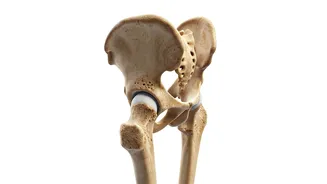Real Health Unveiled
The conventional emphasis on weight often misses the broader picture of health. A more informed approach centers on evaluating strength, cardiovascular
fitness, flexibility, and daily movement capacity. Studies show that these functional metrics are more predictive of long-term health, mobility, and disease risk than body weight alone. Instead of solely focusing on the numbers on a scale, it is crucial to recognize that true health encompasses various aspects of physical capability and overall function. This provides a clear, science-backed approach to understanding your fitness level in realistic, everyday terms, leading to a deeper understanding of your well-being.
Heart Rate Matters
Resting heart rate (RHR) is a key indicator of cardiovascular efficiency. A lower RHR generally implies a healthier heart, capable of functioning more efficiently. The typical range for a healthy individual is 60–100 beats per minute. Fitness enthusiasts often have even lower RHRs; for them, a range of 50–60 bpm is considered fit, and athletes may have an RHR below 50 bpm. This simple measurement can offer insight into cardiovascular health, showcasing how efficiently the heart performs its essential functions while at rest. Monitoring RHR provides a straightforward method to gauge one's heart health.
VO₂ Max Explained
VO₂ max, which measures how well the body uses oxygen during exercise, is a significant predictor of heart health and longevity. Higher cardiorespiratory fitness correlates with a longer life expectancy, according to research. If formal testing is unavailable, a fitness walk test can provide valuable insight. The goal is to walk 1 mile (1.6 km) briskly in under 15 minutes without stopping. By regularly evaluating VO₂ max, individuals can keep track of their aerobic fitness, a vital part of overall health.
Grip Strength Test
Grip strength is a strong indicator of overall muscle strength and healthy aging. Research indicates that grip strength is a reliable predictor of injury risk, mobility decline, and overall mortality. Benchmarks for grip strength are: for men, a grip of 40 kg+ is considered good, and for women, 25 kg+ is considered good. A simpler daily measure involves the ability to open tight jars and carry heavy groceries comfortably, indicating adequate grip strength. Maintaining good grip strength is important for overall physical function and independence.
Push-Up Test Guide
The push-up test is a practical way to assess upper body strength. A study showed that men who could complete 40 push-ups had a significantly lower risk of developing cardiovascular disease. Benchmarks for the push-up test are: for men, 15–20 push-ups are average, and 25+ are considered strong. For women, 10–15 push-ups are average, and 20+ are considered strong. Regular push-ups can greatly improve upper body strength and have positive implications for cardiovascular health.
Mobility and Strength
The sit-to-stand test is a useful method to assess lower body strength and mobility. It is widely used in physiotherapy evaluations. To perform this test, sit in a chair and stand without using your hands. Repeat this process for 30 seconds. Benchmarks for this test are: for those aged 18–50, 18+ repetitions is good, and for those aged 50+, 12+ repetitions is good. Regular assessment of lower body strength and mobility can provide valuable information about overall physical function and resilience.
Flexibility Check
Flexibility is a crucial aspect of overall fitness, and the sit-and-reach test is a common way to measure it. Lower back and hamstring flexibility help in reducing injury risk. If you can comfortably touch your toes while seated, your baseline flexibility is considered functional. Maintaining adequate flexibility is important for the prevention of injuries and enhanced mobility, supporting everyday activities and improving overall physical well-being. A simple check can provide valuable insights into flexibility and promote proactive health management.
Daily Movement Baseline
Daily movement is another significant factor in overall health. A study suggests that a daily step count of 5,000–7,500 steps improves metabolic and cognitive health. To assess daily movement, these benchmarks can be used: under 3,000 steps indicates low movement, 5,000–7,500 steps is moderate activity, and 8,000–10,000+ steps is considered high activity. By staying active daily, people can enhance their metabolism, promote cognitive function, and contribute to overall health and well-being. Incorporating more steps into the daily routine is a simple yet impactful way to make improvements in overall fitness.












